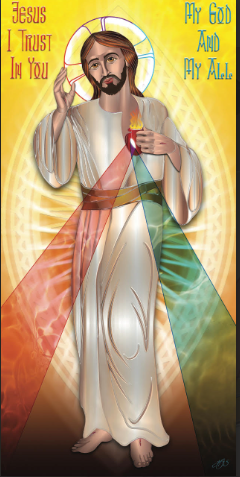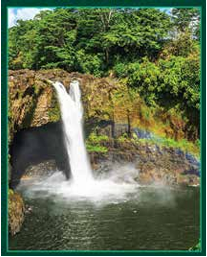(This article originally appeared in the TAU-USA 116)
Regional Roundup
In this issue, five of the 30 regions are highlighted.
St. Margaret of Cortona Region
 The St. Margaret of Cortona Region covers all of Maryland and Virginia, Washington D.C., part of southeast Pennsylvania, southern Delaware, and the eastern portion of West Virginia. It includes 33 fraternities and one emerging fraternity.
The St. Margaret of Cortona Region covers all of Maryland and Virginia, Washington D.C., part of southeast Pennsylvania, southern Delaware, and the eastern portion of West Virginia. It includes 33 fraternities and one emerging fraternity.
Back in the early to mid-1990’s when the regions were being established in the United States, a friar suggested to the establishment team that a Secular Franciscan be chosen as the patron for this region and St. Margaret of Cortona was recommended and chosen based on her compelling life story.
The region is home to our Nation’s capital, along with many famous monuments, museums, and historical sites resulting from the early history of our country during the Revolutionary and Civil War periods.
St. Clare Region
 All of Missouri, except for the Kansas City area, southwest Illinois, Northern Arkansas, Southeast Indiana, and Memphis, Tennessee, are within St. Clare region, which has eight established fraternities and two emerging fraternities.
All of Missouri, except for the Kansas City area, southwest Illinois, Northern Arkansas, Southeast Indiana, and Memphis, Tennessee, are within St. Clare region, which has eight established fraternities and two emerging fraternities.
On October 13, 1995, the region was the 24th to be established under the regionalization efforts and was named after St. Clare of Assisi.
The St. Clare Region is very diverse, spanning from the Ozark Mountains, the Mississippi River Valley to the plains of Northern Missouri and Illinois. Centrally located in the USA, the St. Clare Region’s largest city, St. Louis, is a convenient destination for hosting National Chapters, Quinquennials, National Committee events and CNSA gatherings. The Region welcomes all these events and looks forward to hosting many more in the future. Website: www.stclareregionofs.org
Divine Mercy Region
 Lower Michigan (“the Mitten”) and Toledo, Ohio make up the Divine Mercy Region. It has 20 established fraternities, one emerging group, one cell, and one region sponsored group.
Lower Michigan (“the Mitten”) and Toledo, Ohio make up the Divine Mercy Region. It has 20 established fraternities, one emerging group, one cell, and one region sponsored group.
In October of 1993, they became the 13th established region. When the first council was formed, Divine Mercy was suggested for its name along with other suggestions, including St. Thomas More. During this time, OFS members were inspired from attending Medjugorje pilgrimages. Hence, approval for the name Divine Mercy Region was made.
Some interesting facts about the region: Geographically, lower Michigan is a peninsula, surrounded by three Great Lakes: Lake Michigan, Lake Huron, and Lake Erie.
Michigan has a long history of Franciscan presence. In the 18th century, French missionaries who accompanied explorers and settlers included Recollect Franciscans, from a reform movement within the Franciscan Order in France. In the 19th century, Capuchin friars established a more permanent presence in Michigan. The Midwest Capuchin Province of St. Joseph, based in Detroit, became a central hub for their activities. And Conventual friars have been involved in various ministries helping to spread the Franciscan ideals of simplicity, poverty, and care for creation.
Members from the region have been recognized for their participation at multiple levels within the Order, including Marie Amore, OFS, who was instrumental in the development of regionalization and multiple OFS resources, and two recipients of the National JPIC Award.
Ohana ‘O Ke Anuenue Region
 Not surprisingly, the Ohana ‘O Ke Anuenue Region, which means Family of the Rainbow, covers both the Hawaiian Islands and Guam. It includes six established fraternities: two on the island of Oahu, one on Maui, two on the Big Island of Hawaii, and one on Guam. There is also an emerging fraternity on the island of Kauai.
Not surprisingly, the Ohana ‘O Ke Anuenue Region, which means Family of the Rainbow, covers both the Hawaiian Islands and Guam. It includes six established fraternities: two on the island of Oahu, one on Maui, two on the Big Island of Hawaii, and one on Guam. There is also an emerging fraternity on the island of Kauai.
The region is one of the most diverse, made up of members of different ethnicities. Also, because the fraternities are on different islands; it is impossible to drive to a regional gathering. Members would need to fly with costs ranging from $200 to $1500. Thus, only the Chapter of Elections and Visitations are held in person. All other Chapters are via Zoom. Members do come together when a formation mini-series is offered inviting all to learn more about our Order.
St. Francis Region
 The St. Francis Region covers the southern third of California and includes 22 fraternities and one newly forming group.
The St. Francis Region covers the southern third of California and includes 22 fraternities and one newly forming group.
When regionalization was occurring, the members involved were not sure if St. Francis would be allowed for a region’s name, or if it had already been taken. Since the first reply was “yes” – that St. Francis could be used, and the answer to the second concern was “no” – no one else requested it, St. Francis became the region’s name.
The region is blessed to have many cultures represented in its fraternities. Half of the fraternities are made up of members who speak languages other than English as their first language. There are seven Korean speaking fraternities, two Spanish speaking, and two Vietnamese speaking. There is also a fraternity with a majority of members who are from the Philippines and speak Tagalog.
Nine of the 21 Spanish Missions in California that were established by Franciscan friars are in St. Francis Region. Fraternities meet at three of them, and the newly forming group does, also. All four of these missions still have Franciscan friars in residence, although many others do not.



Leave A Comment